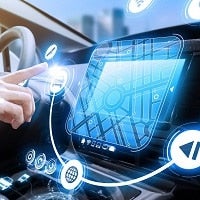Technology plays a key role in popular fiction, probably because it is so dominant in real life. Take the iconic and long-running film series featuring the world’s favorite spy, James Bond, for example. It is fair to say that Q is the unsung hero of Bond’s success, because without those famous gadgets that never seem to falter, Bond would surely be long gone from our screens.
In the Bond Universe Q reportedly stands for Quartermaster, which in the real world normally refers to someone – usually an Officer – in charge of supplies. Although it seems there is always something in Q’s armaments that ‘isn’t quite ready’, our protagonist generally has something reliable up his sleeve ready to save the day.
Since the series, started back in the 60s, the gadgets have changed to remain contemporary. In more recent installments, Bond has made use of mobile technology and on at least one occasion has used a Smart Phone to drive his car, while skulking in the back seat out of harm’s way (how very un-Bond like!)
While these gadgets are undoubtedly little more than film props, there is normally something about them that is convincing (invisibility car paint aside) and it is this realism that helps us suspend disbelief. The scene where Bond drives a car using a Smart Phone is a perfect example and we’re not far from that reality.
Many cars and particularly EVs and hybrids, which seem to be at the forefront of many technologies, now have this level of connectivity. They generally rely on a companion Smart Phone/Tablet application that allows the owner to access certain features remotely. This may include activating the central locking or air conditioning, as well as setting charge cycles for electric or hybrid vehicles. In some cases, manufacturers have integrated the ability to start the car and even drive it at speeds suitable for parking. As they are now such a major presence in our lives, the way our phones integrate into our cars must constantly evolve, and popular fiction clearly recognizes that.
The introduction of ‘infotainment’ was the start of that evolution; it marked a moment in time when car manufacturers began to bring together the functional and non-functional systems in a car. In a similar timeframe phone manufacturers started to standardize on the USB interface both for power and data. Today we are at a major step in that evolution, which will see the USB-C (Type-C) connector become the standard for not just Smart Phones but many other forms of mobile electronic device.
Migrating to the USB-C (Type-C) connector will take time, particularly as the lifecycle of the devices involved is much shorter than the lifecycle of a car. This means that, while car manufacturers will likely move to the Type-C interface quite rapidly, thanks to devices like the FUSB302B programmable USB Type-C controller with Power Delivery, as consumers it may be several years before we fully ‘upgrade’.
The Power Delivery aspect of USB 3.x means we can charge our devices faster, access more power and combine that with standard or even manufacturer-specific data protocols. This will surely open up a new level of interactivity between our cars and our mobile devices, one that may well give us that James Bond experience.
Visit our USB-C Solutions page and find out more about our solutions including Smartphone use case.


